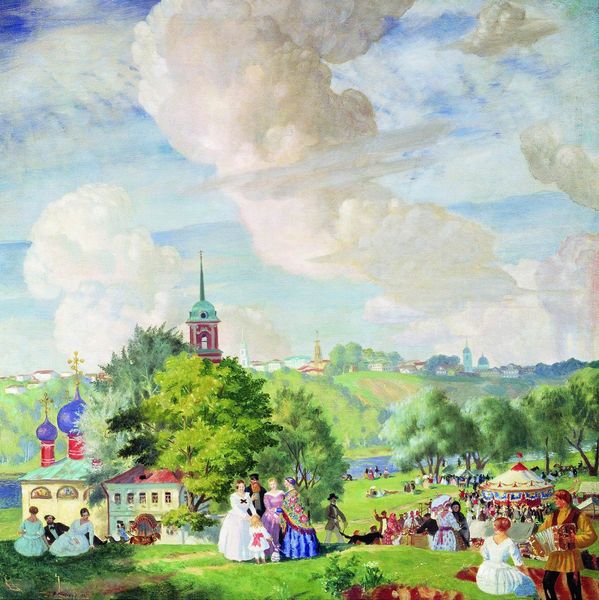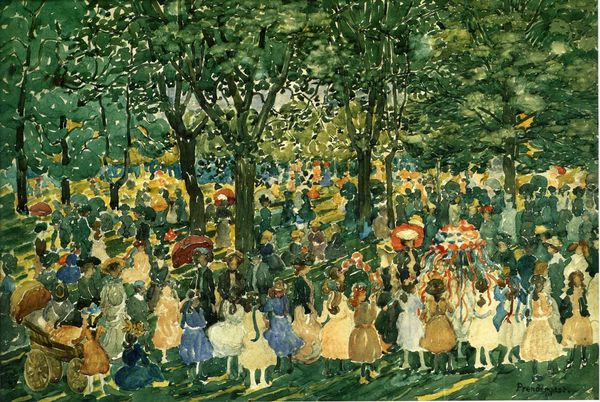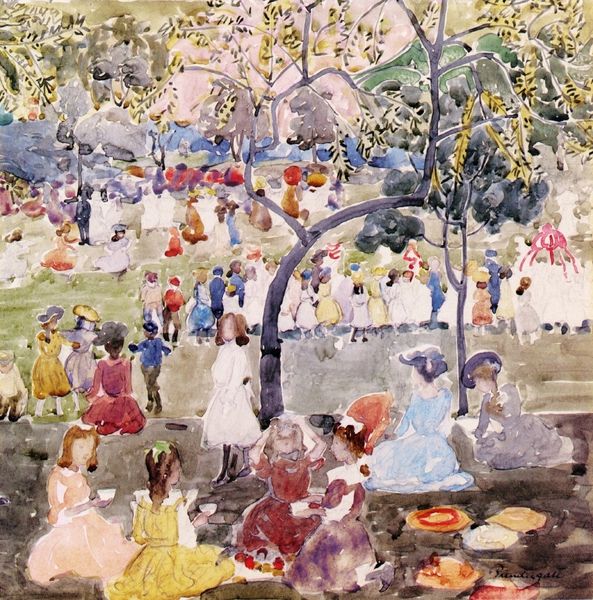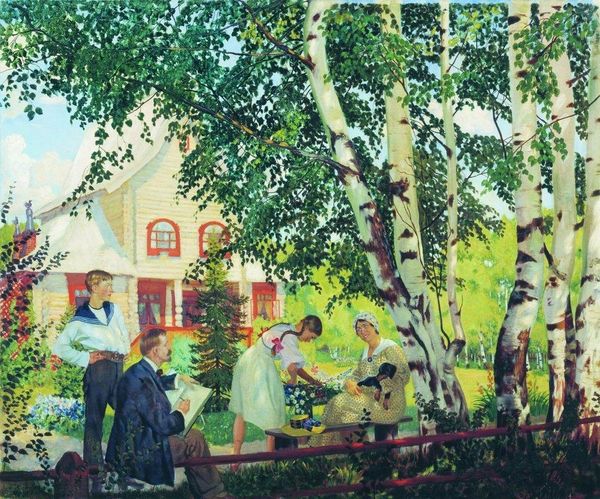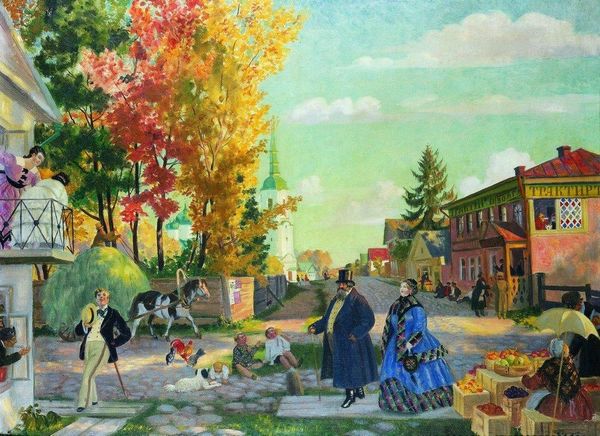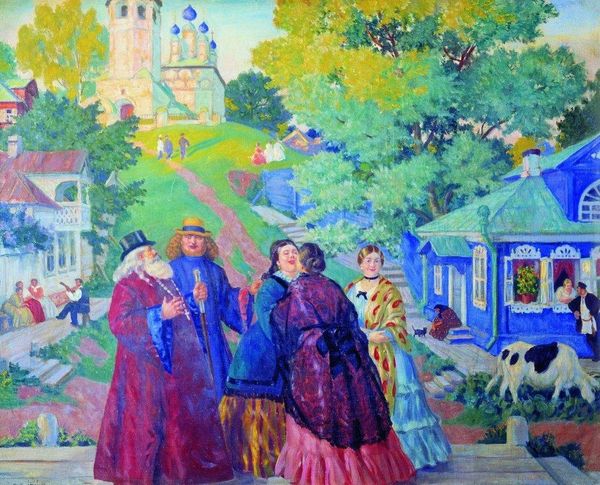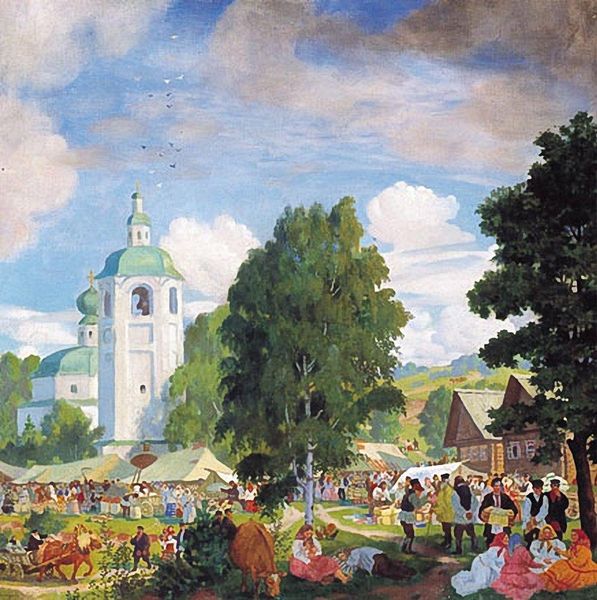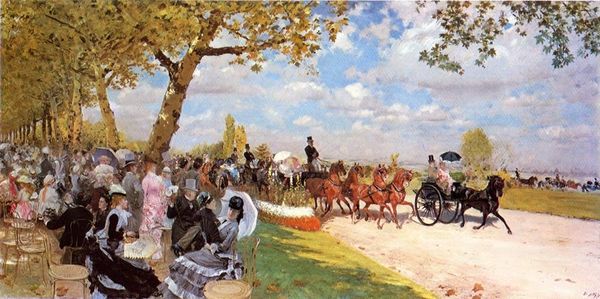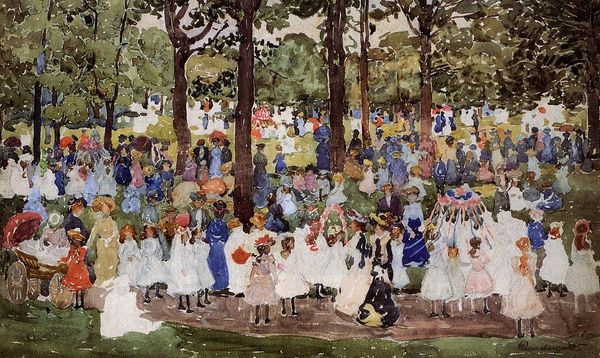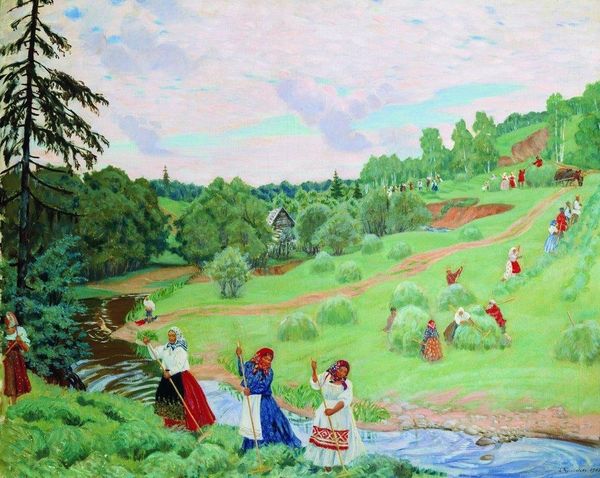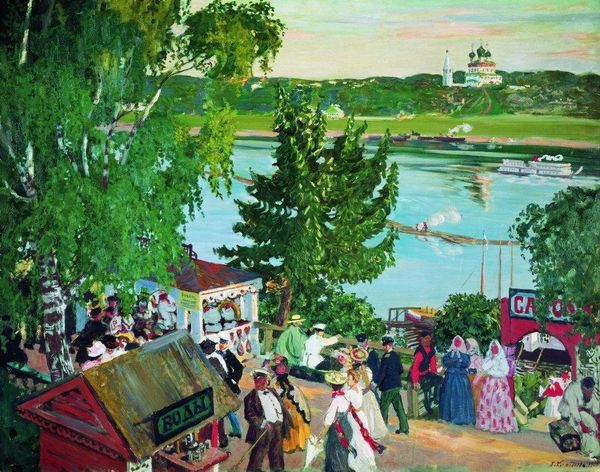
painting, oil-paint
#
tree
#
painting
#
oil-paint
#
landscape
#
oil painting
#
folk-art
#
naive art
#
russian-avant-garde
#
genre-painting
#
street
Copyright: Public domain
Curator: Boris Kustodiev's 1920 oil painting, "Trinity Day," captures a vivid scene of celebration. It's remarkable how he manages to pack so much detail into a single canvas. Editor: My first impression is one of overwhelming activity, a bit chaotic. The painting pulses with life and a certain vibrancy, doesn't it? Almost dizzying with its colors and layers of people. Curator: Indeed. Kustodiev was working within the Russian Avant-Garde at this time, and it’s clear how much folk art inspired him. We see a layering of influences, a nod to pre-revolutionary life even as the country underwent immense change. Editor: It is very interesting in this context. Looking at the costumes and general merriment, one might overlook that this was painted shortly after the revolution, a time of immense suffering for some and hope for others. How do you see it reflecting this period of turmoil? Curator: The painting almost deliberately avoids addressing those darker aspects. The artist seems intent on immortalizing this kind of idealized Russian festivity. There is this idea to create and maintain cultural memory through genre painting. Editor: I appreciate your point about cultural memory, but I wonder if it also romanticizes a particular segment of society. Considering that he’s focusing on leisure and ornate traditions when so much of the country was experiencing material hardship, one has to ask whom this celebration really represents? Curator: Well, folk art often abstracts from reality, doesn't it? Kustodiev certainly portrays the festivities with a kind of fairytale glow, but it’s hard to ignore his love of depicting Russian life. The scene becomes symbolic, perhaps, of the Russia he wanted to preserve. Editor: I agree with the sentiment. The rich colors and carefully constructed layering definitely showcase Russian folk life and celebration, with both all its joys, while obscuring some harsh realities that affected many more people at the time. Curator: It’s a painting that demands we unpack not just what it shows but what it intentionally leaves out, how memory and experience get shaped into a certain image. Editor: Exactly! It really does bring to the forefront questions about art, history, and selective narratives that surround cultural identity.
Comments
No comments
Be the first to comment and join the conversation on the ultimate creative platform.
